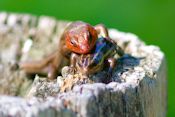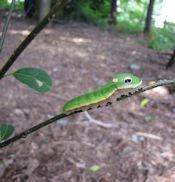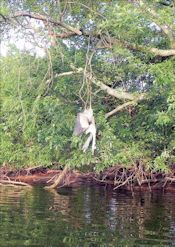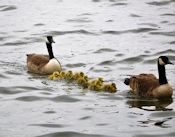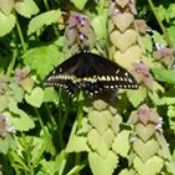Spring is breeding time in Dyke Marsh for many species of wildlife, including skinks. The American five-lined skink, (Plestiodon fasciatus), is one of the most commonly seen lizards in eastern North America and is frequently observed around logs along the Haul Road Trail (photo, skinks mating May 2016 by Ed Eder).
At the quarterly meeting of FODMers and friends on May 11, 2016, Alan Ford and Laura Beaty gave a presentation on the interrelationships of plants and animals and the important role of pollinators and leaf-eaters. Alan is president of the Potowmack Chapter of the Virginia Native Plant Society and Laura chairs the Propagation Committee.
Every spring, FODMers welcome the spring return of the ospreys (Pandion haliaetus) to Dyke Marsh and the Potomac River shoreline where these magnificent raptors build and refurbish their nests and raise their young. In recent years, there have been approximately 10 to 12 active osprey nests within FODM’s breeding bird survey tract, a three-mile area that extends from the Porto Vecchio condominiums near Hunting Creek to south of Morningside Lane.
Despite the rebound in the osprey population, threats still exist.
On the morning of April 29, 2016, 24 students and three teachers from Alexandria’s T.C. Williams High School’s International Academy visited Dyke Marsh to observe in action some of the lessons of their biology class and to try their hand at suppression of invasive plants.
Volunteers began lepidoptera and odonata surveys in Dyke Marsh on April 20, 2016, led by Jim Waggener. On the 20th, surveyors identified five butterfly species in a brief span. The peak time for surveys is May through September. This work helps identify and save critical habitat that preserves biodiversity in our region.

